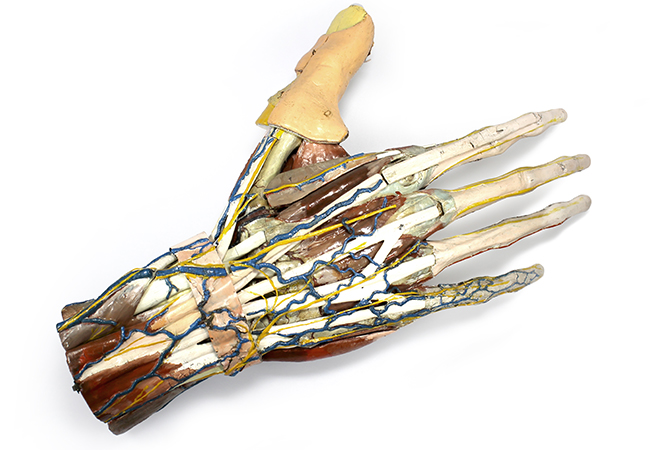
Introduction
The Medicine and Medical Artefacts Collection of Seville University shows the wholeset of instruments employed in physiological research of the past, along with remarkable anatomical models which were part of researching and teaching. Tools that were essential to the development of physiology as an experimental and fundamental science, anatomical instruments used to dissect human corpses and indispensable equipment for anthropometric studies, useful both for teaching and researching.
As for the anatomical models, the majority of the pieces were academic works made by students ofJosé María Cañadas Bueno (1897-1975) chair of anatomy, when he was teaching Descriptive and Topographic Anatomy from 1928 to 1967. These models are made in polychromatic wood, mechanically carved by anatomical sculptors and, to a lesser extent, of plasterboard. Several pieces are signed with the “AP” initials, which correspond to the sculptor Antonio Pérez.
History
The Faculty of Medicine appears to be part of Seville University in its oldest records, more precisely in the Bull issued in 1598. Nevertheless, the original Faculty was extinguished in 1845, as a consequence of reforms included in the so-called Plan Pidal.
The current Faculty has its roots in the Escuela Libre de Medicina, founded on October 1868 by the Junta Revolucionaria of Seville. It was Federico Rubio to inspire its creation. Its headquarter was set in the ancient convent of Madre de Dios. This school was incorporated into the University of Seville just in 1917.
Further Information
Location
Universidad de Sevilla, Av. Sánchez Pizjuán, s/n, 41009 Sevilla
Opening hours
To be notified
